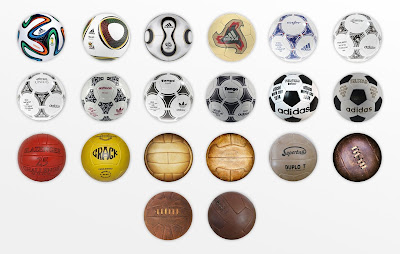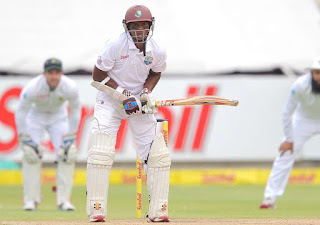From 1930 to 2018: How FIFA Match Balls Evolved
What is the basic difference between the FIFA football
tournament and tournaments of all the other sports? Glam and prestige of the
game is certainly not the sole factor that make FIFA a premier tournament as
there are other sports events that are as prestigious as FIFA itself, say for
example Olympics is as great as FIFA . Nevertheless the thing that
distinguishes the designated football tournament than all other tournaments is
the Football itself. The match ball of the tournament is the star and unlike
other sports where equipments to be used are not given much attention, FIFA
idolizes its match ball. What makes the ball special is its purpose and the
vision it encapsulates. The FIFA match ball is more than just a ball, it is the
flavour and purpose of the whole game. This is why each year new match balls
are introduced to represent the essence of that particular year’s tournament.
Since the tournament has been there since as early as 1930 and is still going
strong every 4 years saw the advent of a new style match ball; each one better
than the last one. Here is a list of all the match balls involved in the game
from 1930 till the present.
1930 World Cup (Uruguay) : T-Model
The very first tournament used balls that were manufactured in England itself
or the country that spread this game throughout the world. The ball which is
popularly called the “T-Model” was used. It got its name from the distinctive
t-shaped panel on its sides.
The 1934 World Cup (Italy):
Federale 102
By 1934, soccer was
booming all over the world, and plenty of manufacturers in other countries
were making balls, too. According to Pesti, the fevered nationalism of Mussolini-era Italy "required" that the balls used in their World Cup be made in Italy. Hence the Federale 102: a 13-panel lace-up ball made in Italy.
were making balls, too. According to Pesti, the fevered nationalism of Mussolini-era Italy "required" that the balls used in their World Cup be made in Italy. Hence the Federale 102: a 13-panel lace-up ball made in Italy.
1938 World Cup (France) : Allen
French World Cup,
French soccer ball: The Paris-manufactured Allen, a 13-panel ball with
laces—which were how these early balls were inflated, before the era of valves.
It seems that other models were used in the matches, too, though there's no way
to say how many.
1950 World Cup (Brazil) : Super Duplo T
In the 1930s, Tossolini an
Argentinean company had created a ball with a hidden valve that could be pumped
into shape, rather than manually blowing up through laces. But it took two
decades for FIFA to accept the new design, and it wasn't until the 1950 World
Cup that it saw play. This was Super Duplo T model.
1954 World Cup (Switzerland): Swiss World Champion
This Swiss-made ball was unique
for its zig-zag edges, which were sewn together by hand, of course. The ball,
like all official balls in those days, was completely free of printing and
branding.
1958 World Cup (Sweden) : Top Star
This was the first year that FIFA
selected its ball based on a competition. The winner in the randomized trial of
more than 100 balls was a Swedish company called Sydsvenska Laderoch
Remfabriken, who supplied a ball called Top Star notable for its waterproof
waxed surface.
1962 World Cup (Chile): Crack
This ball was known as "the Crack."
It was unique in the sense that its surface was composed of 18 irregular
polygonal shapes, which gave it a complicated look.
1966 World Cup (England) : Challenge 4-star
This
ball ‘Challenge 4-star’, made by a British company , represents the end of an
era: After 1966, Adidas took over the job of designing and manufacturing World
Cup Balls. This baby was made of 25 rectangular panels and, notably, still
adhered to the rule that there should be no markings or branding on the ball.
Oh, how things have changed.
1970
World Cup (Mexico) & 1974 World Cup (Germany) : Telstar & Telstar
Durlast
The
ball used for the 1970 and 1974 World Cup was the Telstar, design by Adidas. It
was the first white football ever to be painted with black pentagons which
became synonymous with football throughout the world. The distinct 32 white and
black leather panels that comprised the Telstar made it the roundest ball of its
time.
1978 World Cup
(Argentina) & 1982 World Cup (Spain) : Tango & Tango Espana
The
famous Adidas Tango design was introduced for the 1978 World Cup, and used
again in 1982. The Tango design formed the blueprint for the next five FIFA
World Cup footballs.
1986 World Cup
(Mexico) : Azteca
The
ball for the 1986 World Cup, the Adidas Azteca, was the world's first fully
synthetic football.
1990 World Cup
(Italy) : Etrusco Unico
The
Adidas Etrusco Unico, the official ball in 1990, in addition to being fully
produced with synthetic materials, was also completely water resistant.
1994 World Cup (United
States) : Questra
Adidas
introduced the first official match ball featuring a high tech ultra high
energy-return layer of white polyethylene foam, giving a greater performance
ball.
1998 World Cup
(France) : Tricolore
The
ball used in 1998, the Adidas Tricolore, was the first ever multi-colored
official match ball.2002 World Cup (South Korea) : Fevernova
The official ball of the World Cup in 2002 was the Fevernova. It featured a refined syntactic foam layer to give the ball superior performance characteristics.
2006 World Cup (Germany): Teamgeist
The official ball in Germany 2006 is the Teamgeist again designed by Adidas. This ball incorporates a figure-8 design for each ball segment, which results in less joins and therefore more flat area so that a foot strike is more likely to hit a soft point on the ball.
2010 World Cup (South Africa) : Jabulani
The official match ball for the South Africa World Cup is named the "Jabulani", which means "bringing joy to everyone" in the language isiZulu (isiZulu is the language of the Zulu people, with about 10 million speakers, the vast majority of whom live in South Africa). This is the eleventh World Cup match ball made by Adidas, and it features eleven colors, one for each player on the pitch. For the World Cup Final, a golden colored version of the ball, the "Jo'bulani", was used. All the balls were constructed of eight thermally-bonded polyurethane panels, making them very nearly waterproof. With internal stitching, the nearly perfect sphere did not behave as expected for the players, causing many complaints during the 2010 World Cup.
2014 World Cup ( Brazil) : Brazuca
The official soccer match ball of the 2014 World Cup in Brazil is the Brazuca, again made by Adidas. The ball boasts several critical design innovations, most noticeably six identical "boomerang" shaped panels, just a couple fewer than the ball from the last World Cup, the Jabulani's eight, and many less than the thirty-two seen on common soccerballs. The Brazuca's swirling seam structure and a raised nub texture, similar to a basketball's, are supposed to improve its touch and aerodynamics.
2018 World Cup (Russia) : Telstar (Telstar 18 & Telstar Mechta)
The Adidas Telstar 18 is the official match ball of the 2018 FIFA World Cup. The black and white patterned ball was named for its resemblance to the original Telstar communications satellite, which was coined by the combination of the word "television" and "star. The ball has an embedded near-field communication (NFC) chip to provide interactivity for consumers who purchase the ball.
Article By: http://www.11wickets.com




Comments
Post a Comment